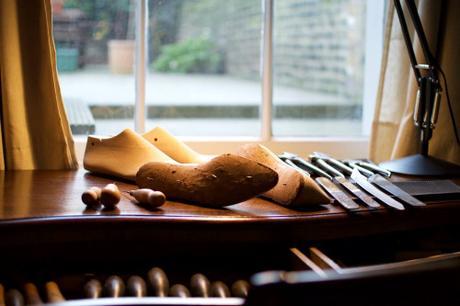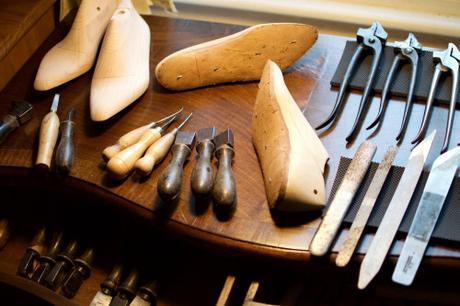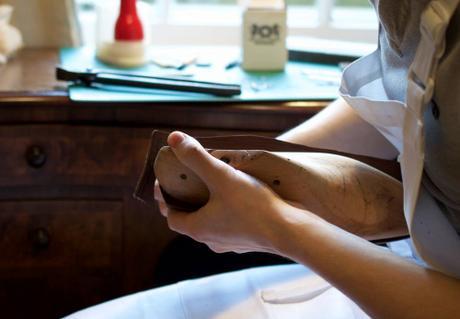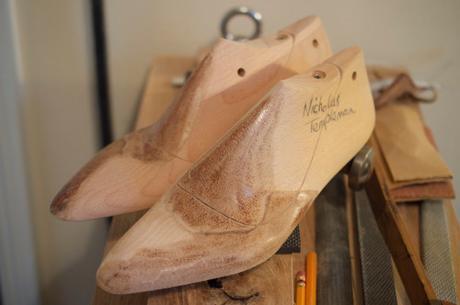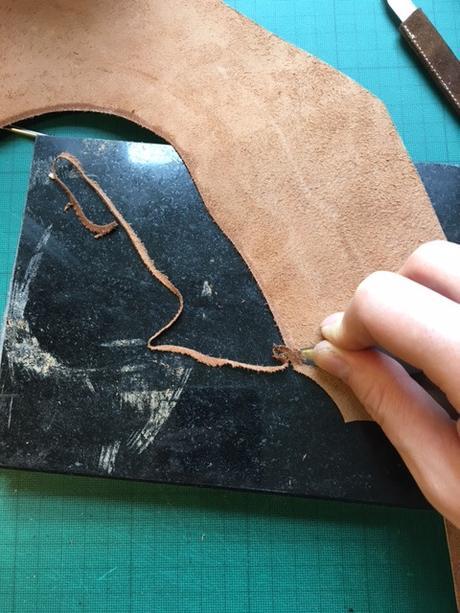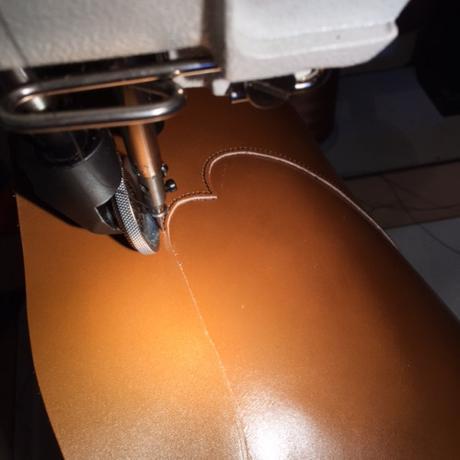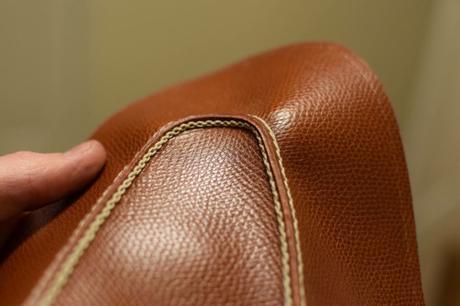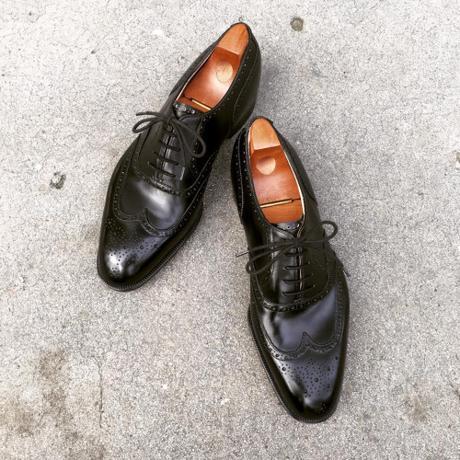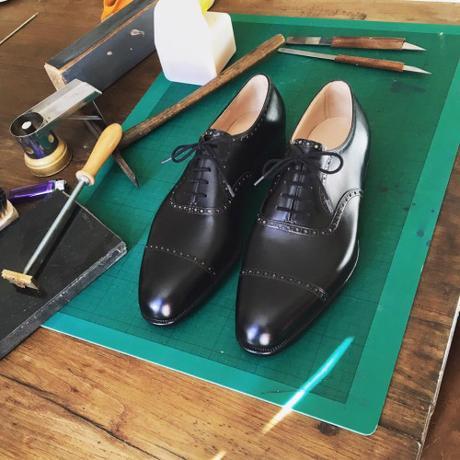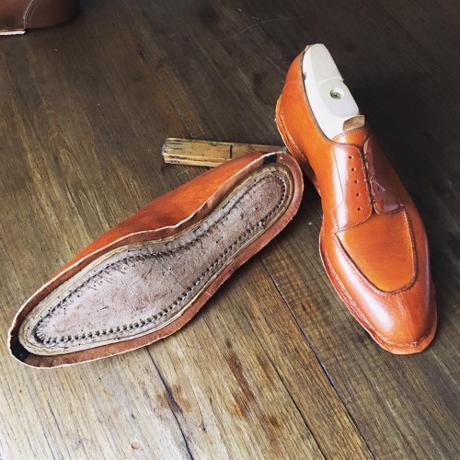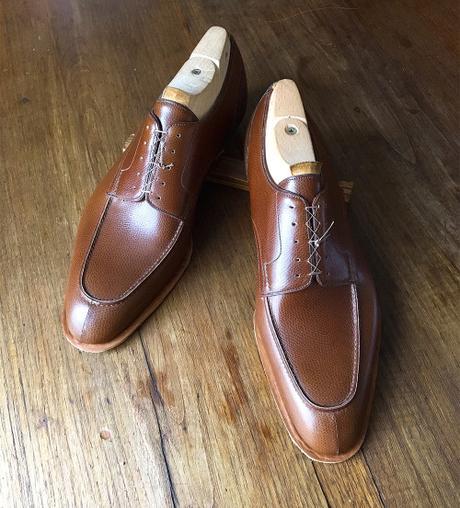
It’s ironic that shoemaking is sometimes referred to as “the gentle craft” since, of all the bespoke trades, it’s seems like the least gentle of them all. The lasts are carved from large blocks of wood using a hinged blade; the stiff leathers are pulled over their wooden forms using pinchers; and heels are attached by nailing them down with hammers. The whole process sounds very noisy.
Out of that process, however, can come such beautiful and elegant things. Nicholas Templeman recently sent me the photo above of my country grain Norwegians, which are currently in their in-welt fitting stage. Sleeker than Edward Green’s Dover, but more conservative than Saint Crispin’s 633 split-toes, they look like the perfect blend of town and country – something to wear with tweeds in the city.
To get to this stage, a lot has been done since Nicholas made my lasts a couple of months ago. The first step was to draft the pattern – much like a tailor would for a suit – and then lay the pieces on a leather hide. Only, in this case, the cutter has to be careful with where he or she puts the pieces. “The vamp needs to be cut from the hind quarters of the animal, since that’s where the grain is tightest,” Nicholas explains. “As you move up towards the neck, the leather get increasingly softer, so it doesn’t work as well for areas that bend a lot.” That sort of careful cutting is what prevents loose grain wrinkling, which you sometimes see on more casual shoes (or just cheaply made ones).
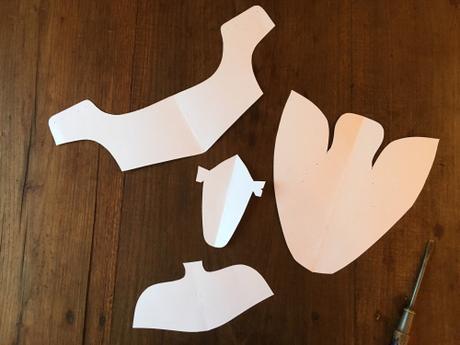
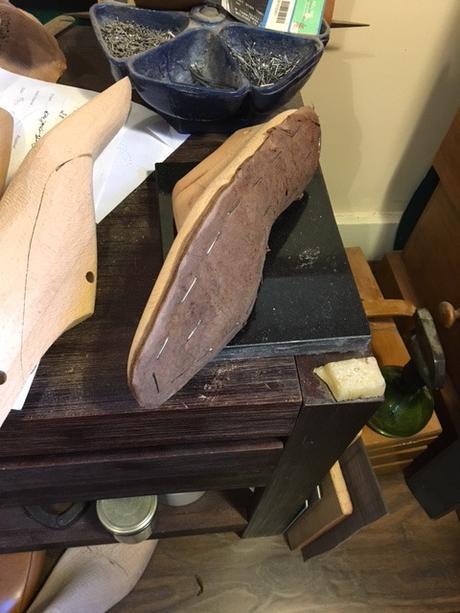
Once the leather pieces are cut, they’re trimmed to their final shapes and stitched together with the necessary stiffeners and linings. At this point, you get something that roughly looks like a brimless baseball cap – a pair of uppers that have the rough semblance of a shoe, but none of the shaping.
That’s where the lasting process comes in, although first, the insoles need to be blocked. That’s where the shoemaker takes a bit of leather from the shoulder of the animal, soaks it in water, and then tacks it onto the bottom of the last. The insole is then allowed to dry over the course of a day before any excess material is trimmed, giving it the necessary shape to cradle the wearer’s foot. Afterwards, the uppers are then pulled taut over the last and sewn to the welt.
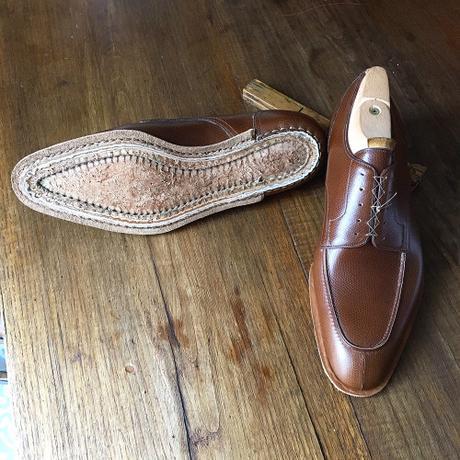
That’s where we are now. You can see the layers that make up my Norwegians on the right shoe pictured above. Moving from the topmost layer to the bottom, there’s the welt (on which the soles will be attached), the upper leather (in this case a vintage country grain from Annonay), the lining (looks slightly yellow in the photo), and finally the holdfast portion on the insole and some stitching (which is holding everything together).
On machine-made, Goodyear welted shoes, that holdfast would be replaced by a strip of canvas and some glue. Known as gemming, the strip is sometimes criticized by traditional shoemakers for not being as sturdy, since the glue can fail and the canvas can slip. It’s certainly a compromise in terms of quality, but on the upside, it also allows the manufacturer to offer a more affordable product (which can still last decades if properly cared for).
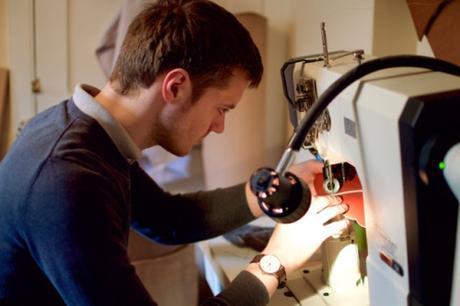
The process of making a handmade, bespoke shoe is quite impressive when you compare it to industrial techniques. In the 1930s, a typical, factory-made shoe required about 80 people and 150 machines, each tasked with some small operation. In a bespoke workshop, all of the production goes to just six people – the fitter, last maker, clicker, cutter, rough stuff cutter, and maker. Industrially made shoes are much more efficiently produced, and thus less expensive, but in terms of pure craft, handmade shoes are a different class.
For those interested, Nicholas is touring the US this week. He’s stopping by New York City, Boston, and San Francisco between now and April 12th. If you’re on the fence about ordering, I encourage you to at least stop by for an appointment (it won’t cost you anything). Shoes can sometimes be fitted remotely – with the maker sending shoes back and forth to the customer – but measurements have to be taken in person. Who knows how much longer Nicholas will be visiting the US, but so long as he has your measurements on file, he can make you a pair of bespoke shoes.
For me, I’ll be seeing him next week in San Francisco for my fitting. If my in-welt Norwegians fit well, Nicholas will have them finished, polished, and then delivered my way. More on them when they arrive.
(Disclosure: Since readers are sometimes suspect of the relationship between bloggers and makers, I should note that I didn’t receive any kind of discount on my order, nor is this some kind of paid post. I’m just a big fan of his work and hope to share his craft with others.)
